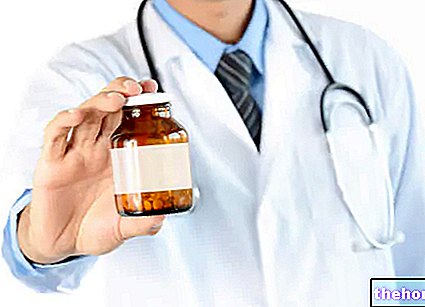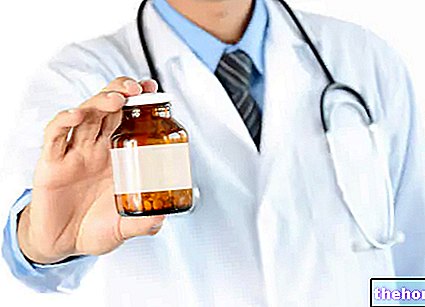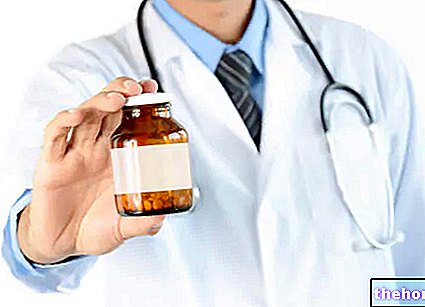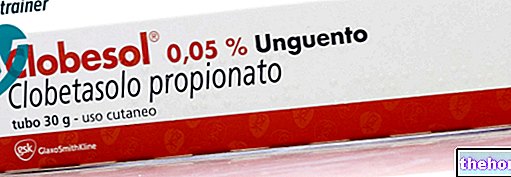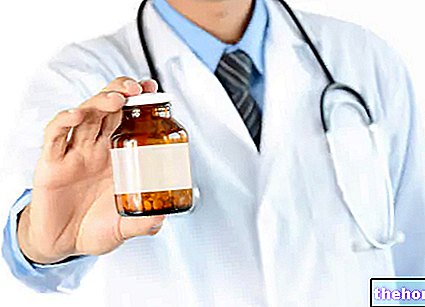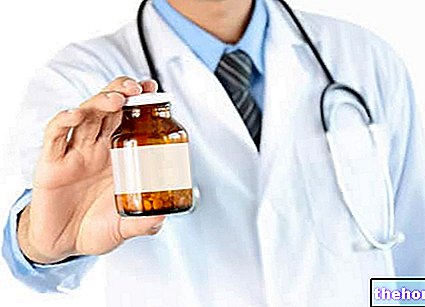Active ingredients: Menotropin
MEROPUR 75 IU powder and solvent for solution for injection
Meropur package inserts are available for pack sizes:- MEROPUR 75 IU powder and solvent for solution for injection
- MEROPUR 600 IU powder and solvent for solution for injection
- MEROPUR 1200 IU powder and solvent for solution for injection
Why is Meropur used? What is it for?
MEROPUR is a freeze-dried powder to be dissolved in a liquid (solvent) before being used. It is given as a subcutaneous or intramuscular injection.
MEROPUR contains two hormones called follicle stimulating hormone (FSH) and luteinizing hormone (LH). FSH and LH are natural hormones, produced by both males and females, that help the reproductive organs work properly.
The FSH and LH contained in MEROPUR are obtained from highly purified urine of postmenopausal women known as menotropin.
MEROPUR is indicated for the treatment of female infertility in the following two clinical situations:
- Women who fail to become pregnant due to the inability of the ovaries to produce eggs (including polycystic ovary syndrome). MEROPUR is used in women who have already been treated for infertility with a drug called clomiphene citrate to no avail.
- Women undergoing reproductive programs with assisted reproductive techniques (including in vitro fertilization / embryo transfer (IVF), intratubal 1 gamete transfer (GIFT) and intracytoplasmic sperm injection (ICSI)). MEROPUR helps the ovaries to produce many follicles (egg sacs) in which eggs can develop (multiple follicular development).
Contraindications When Meropur should not be used
Before starting treatment with MEROPUR, both you and your partner must have been examined by a doctor to establish the causes of infertility. In particular, the following conditions must have been evaluated for any other treatments:
- Hypofunctionality of the thyroid or adrenal glands
- Elevated levels of the hormone called prolactin (hyperprolactinaemia)
- Tumors of the pituitary gland (a gland at the base of the brain)
- Tumors of the hypothalamus (area underneath the part of the brain called the thalamus)
If you know you have any of the above conditions, tell your doctor before starting treatment with MEROPUR.
Do not use MEROPUR in the following cases:
- You are allergic (hypersensitive) to menotropin or to any of the other ingredients of MEROPUR.
- You suffer from tumors of the uterus, ovaries, breasts, pituitary or hypothalamus.
- You have ovarian cysts or enlarged ovaries (not due to polycystic ovary syndrome).
- You suffer from defects in the uterus or other organs of the reproductive system.
- You suffer from vaginal bleeding of unknown origin.
- Suffers from uterine fibroids.
- You are pregnant or breastfeeding.
- You are in premature menopause.
Precautions for use What you need to know before taking Meropur
If you suffer from:
- Abdominal pain
- Abdominal swelling
- Nausea
- He retched
- Diarrhea
- Weight gain
- Breathing difficulty
- Decreased urine production
Tell your doctor about the above straight away, even if symptoms appear a few days after the last injection. These may be signs of high activity of the ovaries which can become severe.
If symptoms become severe, infertility treatment should be stopped and you should go to a hospital.
Strict observance of the recommended doses of MEROPUR and careful monitoring of treatment reduces the possibility of developing these symptoms.
You may continue to have these symptoms, even after stopping treatment with MEROPUR. Contact your doctor immediately if any of the symptoms described appear.
While you are being treated with this medicine, your doctor will have an ultrasound scan and sometimes blood tests to check your response to treatment.
Treatment with hormones, such as MEROPUR, may increase the risk of:
- Ectopic pregnancy (pregnancy outside the uterus) in case of previous problems with the fallopian tubes
- Miscarriage
- Multiple pregnancy (twins, triplets, etc.)
- Congenital malformations (physical defects of the newborn present at birth)
Some women who have received infertility treatment have developed cancers of the ovaries and other reproductive organs. It is not yet known whether treatment with hormones such as MEROPUR causes such problems.
Venous or arterial clot formation is more likely in pregnant women.
Infertility treatments may increase this risk, especially if either you or any of your immediate family members are overweight or have had such episodes. Tell your doctor if you have such a case.
Interactions Which drugs or foods may change the effect of Meropur
Tell your doctor if you are taking or have recently taken any other medicines, including medicines obtained without a prescription.
Clomiphene citrate is another medicine used to treat infertility. In case of concomitant use of MEROPUR and clomiphene citrate, the effect on the ovaries is increased.
Warnings It is important to know that:
Pregnancy and breastfeeding
MEROPUR should not be used during pregnancy or breastfeeding.
Driving and using machines
MEROPUR is unlikely to affect the ability to drive and use machines.
For those who carry out sporting activities
The use of the drug without therapeutic necessity constitutes doping and can in any case determine positive anti-doping tests.
important information about some of the ingredients of MEROPUR
MEROPUR contains less than 1 mmol sodium chloride (23 mg) per dose, so it is essentially "sodium free".
Dosage and method of use How to use Meropur: Dosage
Always use MEROPUR exactly as your doctor has told you. If in doubt, consult your doctor.
Women who do not ovulate (anovulatory women):
Therapy should start within the first 7 days of the menstrual cycle (day 1 is the first day of the cycle). The treatment is daily for at least 7 days.
The starting dose is usually 75-150 IU per day (1-2 vials of powder) but can be adapted, based on your individual response (up to a maximum of 225 IU per day - 3 vials of powder per day). Each dosage should be taken for at least 7 days before being changed. An adjustment of 37.5 IU (half a vial of powder) at a time (and never more than 75 IU) is recommended. If there is no adequate response after 4 weeks of treatment, that cycle should be abandoned.
Once optimal response is achieved, a single injection of 5,000 IU to 10,000 IU of another hormone called Human Chorionic Gonadotropin (hCG) should be given one day after the last MEROPUR injection. It is recommended to have intercourse on the same day. and the day following the injection of hCG. Alternatively, intrauterine insemination (injection of sperm directly into the uterus) can be performed. You will be monitored closely for at least 2 weeks after hCG administration.
Your doctor will monitor the effects of your treatment with MEROPUR. According to your progress, your doctor will decide whether to stop treatment with MEROPUR and not to give you hCG. In this case, you will be instructed to use barrier methods of contraception (eg condoms) or to refrain from sexual intercourse until " beginning of the first menstrual cycle.
Women undergoing assisted reproduction programs:
If you are receiving a GnRH agonist (a medicine that helps the function of a hormone called Gonadotropin Releasing Hormone (GnRH)) at the same time, therapy with MEROPUR should start approximately 2 weeks after starting treatment with the agonist.
In patients not treated with GnRH agonists, MEROPUR therapy should begin on the 2nd or 3rd day of the menstrual cycle (day 1 is the first day of the cycle).
Treatment must be daily for at least the first 5 days. The starting dose of MEROPUR is usually 150-225 IU / day (2 or 3 vials of powder). Subsequent dosages can be increased to a maximum daily dose not exceeding 450 IU / day (6 vials of powder). The dose can be increased up to 150 IU for a single adaptation. As a rule, the treatment should not last for more than 20 days.
If you have enough follicles of the right size, you will be given up to 10,000 IU of a medicine called human chorionic gonadotropin (hCG) in a single injection to induce ovulation (release of an egg).
Your doctor will monitor your clinical status for at least 2 weeks after the hCG injection.
Your doctor will monitor the effects of your treatment with MEROPUR. According to your progress, your doctor will decide whether to stop treatment with MEROPUR and not to give you hCG. In this case, you will be instructed to use barrier methods of contraception (eg condoms) or to refrain from sexual intercourse until " beginning of the first menstrual cycle
INSTRUCTIONS FOR ADMINISTRATION
If you have been asked to administer MEROPUR on your own, you must carefully follow all the instructions given to you.
The first injection of MEROPUR must be given under the supervision of a doctor.
DILUTION of MEROPUR
MEROPUR is supplied in the form of a powder and must be diluted before injection. The liquid to dilute MEROPUR is the one present in the package.
MEROPUR should only be reconstituted immediately prior to use.
To do this:
- Firmly attach the long thick needle (aspiration / reconstitution needle) to the syringe.
- Break the glass vial keeping the breaking point towards you.
- Insert the needle into the solvent liquid vial.
- Draw the entire contents of the vial containing the solvent into the syringe.
- Insert the needle through the rubber stopper of the MEROPUR powder vial and slowly inject all the solvent into the vial, pointing it towards the side of the vial to avoid bubble formation.
- The powder should dissolve quickly (within 2 minutes) to form a clear solution.
- To facilitate the dissolution of the powder, lightly tap the solution. Do not shake, to avoid the formation of bubbles. If the solution is not clear or contains particles, it must be discarded.
- Draw the solution back into the syringe for use.
If you have been prescribed more than one vial of MEROPUR powder for a single injection, you can draw the solution (the first MEROPUR dilution) back into the syringe and inject it into a second vial of powder. You can repeat this for up to three vials of powder in total - but only if your doctor tells you to.
INJECTION of MEROPUR
- When you have drawn enough vials into the syringe to reach the prescribed dose, change the needle for the short, thin one (hypodermic needle).
- Turn the syringe with the needle upwards and give it a little tap to release any air bubbles present in the tip. Press the plunger gently until the first drop of liquid comes out.
- Your doctor or nurse will tell you where to inject (eg front of the thigh, abdomen, etc.).
- Disinfect the injection site.
- For the injection, pinch the skin to form a fold and insert the needle in one quick motion at a 90 degree angle to the body. Push the plunger of the syringe to inject the solution and then remove the needle.
- After removing the syringe, apply pressure to the injection site to stop any bleeding. Gently massage the injection site to help spread the solution under the skin.
- Do not throw the syringe and used materials along with the normal garbage; delete them properly.
Overdose What to do if you have taken too much Meropur
If you have forgotten to take MEROPUR or have taken more than expected, please inform your doctor or nurse.
Side Effects What are the side effects of Meropur
Like all medicines, MEROPUR can cause side effects, although not everybody gets them.
Treatment with MEROPUR can cause hyperactivity of the ovaries, especially in women with polycystic ovaries. Symptoms include: abdominal pain, abdominal swelling, nausea, vomiting, diarrhea, weight gain, difficulty in breathing and decreased urine production.
As a complication of ovarian hyperstimulation, venous thromboembolic events and ovarian torsion may occur. If you notice any of these symptoms contact your doctor immediately, even if they appear a few days after the last injection.
With the use of this medicine, allergic (hypersensitivity) reactions such as redness, itching, swelling of the throat and difficulty in breathing may also occur.
If you notice any of these symptoms contact your doctor right away.
The following are common side effects that occur in 1 to 10 out of 100 patients treated:
- Abdominal pain
- Headache
- Nausea
- Abdominal swelling
- Pelvic pain
- Hyperstimulation of the ovaries (hyperactivity)
- Pain and reactions at the injection site (redness, bruising, swelling and / or itching)
If any of the side effects gets serious, or if you notice any side effects not listed in this leaflet, please tell your doctor or nurse.
Expiry and Retention
Do not store above 25 ° C. Do not freeze.
Store in the original package to protect from light.
Keep this medicine out of the reach and sight of children.
DO NOT use MEROPUR after the expiry date which is stated on the package. The expiry date refers to the last day of the month indicated.
Medicines should not be disposed of via wastewater or household waste. Ask your pharmacist how to throw away medicines you no longer use. This will help protect the environment.
What MEROPUR contains:
The active ingredient is highly purified menotropin (postmenopausal human gonadotropin, HMG), corresponding to a follicle stimulating hormone activity of 75 IU and a luteinizing hormone activity of 75 IU.
The ingredients of the powder are:
- Lactose monohydrate
- Polysorbate 20
- Sodium hydroxide
- Hydrochloric acid
The excipients of the solvent are:
- Waterfall
- Hydrochloric acid
- Sodium chloride
Description of what MEROPUR looks like and contents of the pack
MEROPUR is powder and solvent for solution for injection.
The carton contains 5 or 10 clear glass vials which contain a light powder. It also contains an even number of clear glass vials containing a clear solvent.
Not all pack sizes may be marketed.
Source Package Leaflet: AIFA (Italian Medicines Agency). Content published in January 2016. The information present may not be up-to-date.
To have access to the most up-to-date version, it is advisable to access the AIFA (Italian Medicines Agency) website. Disclaimer and useful information.
01.0 NAME OF THE MEDICINAL PRODUCT
MEROPUR
02.0 QUALITATIVE AND QUANTITATIVE COMPOSITION
Each vial of powder contains highly purified menotropin (human menopausal gonadotropin, HMG) corresponding to an FSH follicle stimulating hormone activity of 75 IU and an LH activity of 75 IU.
Human Chorionic Gonadotropin (hCG) is a hormone naturally present in the urine of postmenopausal women, and is contained in MEROPUR contributing to the total activity of the luteinizing hormone.
For the full list of excipients, see section 6.1
03.0 PHARMACEUTICAL FORM
Powder and solvent for solution for injection.
Appearance of the powder: white to off-white lyophilisate.
Appearance of the solvent: clear and colorless solution.
04.0 CLINICAL INFORMATION
04.1 Therapeutic indications
MEROPUR is indicated for the treatment of infertility in the following clinical situations:
Anovulation, including Polycystic Ovary Syndrome (PCOD), in women who do not respond to treatment with clomiphene citrate.
Controlled ovarian hyperstimulation for induction of multiple follicular development during assisted reproductive techniques (ART) [for example: in vitro fertilization / embryo transfer (IVF), gamete transfer within the tubal (GIFT) and intracytoplasmic sperm injection ( ICSI)].
04.2 Posology and method of administration
Treatment with MEROPUR should be initiated under the supervision of a physician experienced in the treatment of fertility problems.
Method of administration
MEROPUR can be administered by subcutaneous (SC) or intramuscular (IM) injection after reconstitution of the powder with the solvent attached to the package. The powder must be reconstituted immediately before use. To avoid injection of excessive volumes, up to 3 vials of the powder can be reconstituted in 1 ml of solvent. Avoid vigorous shaking. The solution should be discarded if it contains particles or is not clear.
Dosage
The dosing regimens described are valid for both subcutaneous and intramuscular injections.
There is great individual variability in the ovarian response to exogenous gonadotropins. This makes it impossible to define a uniform dosing scheme.
The dosage must therefore be individually determined according to the ovarian response. MEROPUR can be administered alone or in combination with other gonadotropin releasing hormone (GnRH) agonists or antagonists.
The recommendations on the dosage to be used and the duration of treatment may vary according to the treatment protocol adopted.
Women with anovulation (including PCOD)
The goal of treatment with MEROPUR is to stimulate the maturation of a single Graafian follicle from which the oocyte will be released after administration of human chorionic gonadotropin (hCG).
MEROPUR therapy should start within the first 7 days of the menstrual cycle. The recommended starting dose of MEROPUR is 75-150 IU per day, which should be maintained for at least 7 days. The posology should subsequently be adjusted based on the patient's individual response which should be evaluated with clinical monitoring (including ovarian ultrasound alone or in combination with measurement of estradiol levels). Dosage adjustments should not be made at intervals of less than 7 days. The recommended dose increase is 37.5 IU per adjustment, and should not exceed 75 IU. The maximum daily dose should not exceed 225 IU. If the patient does not respond adequately to therapy after 4 weeks of treatment the course of therapy should be discontinued, and the patient should re-initiate treatment with a higher starting dose than in the previous course.
Once the optimal response is achieved, 5000 to 10,000 IU hCG should be administered in a single injection, one day after the last MEROPUR injection. It is preferable that the patient has intercourse both on the day of hCG administration and the day after. . Alternatively, intrauterine insemination (IUI) may be performed. If excessive response to MEROPUR is obtained, treatment should be discontinued, hCG administration should be withheld (see section 4.4) and the patient should use barrier contraception or abstain. from sexual intercourse until the start of the next menstruation.
Women undergoing ovarian hyperstimulation for multiple follicular development in assisted reproductive techniques (ART)
Consistent with what was observed in clinical trials with MEROPUR which included down-regulation with GnRH agonists, MEROPUR therapy should be started approximately 2 weeks after initiation of agonist treatment. The recommended starting dose of MEROPUR is 150-225 IU per day for at least the first 5 days of therapy. Based on clinical monitoring (which includes ultrasound examination alone or in conjunction with measurement of blood estradiol levels) the next dosage should be determined based on the patient's individual response, and should not exceed 150 IU for a single adjustment. The maximum daily dose administered should not exceed 450 IU and a duration longer than 20 days is not recommended in most cases.
In protocols that do not involve down-regulation with GnRH agonists, MEROPUR therapy should be started on the second or third day of the menstrual cycle. It is recommended that the recommended dosage and administration ranges be used for the down-regulated protocols with GnRH agonists described above.
To induce final follicle maturation in the preparation for follicular recovery, once a sufficient number of appropriately sized follicles have been obtained, up to 10,000 IU of hCG should be administered in a single injection. Patients should be closely monitored for at least two weeks following hCG administration.If excessive response to treatment is observed, administration of MEROPUR should be discontinued, hCG should be given up (see section 4.4) and the patient should use barrier contraception or refrain from sexual intercourse until her next menstruation.
Renal / hepatic insufficiency
Patients with renal and hepatic insufficiency were not included in clinical studies (see section 5.2).
04.3 Contraindications
MEROPUR is contraindicated in women with:
- tumors of the pituitary gland or hypothalamus;
- uterine, breast or ovarian cancer;
- pregnancy and breastfeeding;
- gynecological haemorrhages of unknown etiopathogenesis;
- known hypersensitivity to the active substance or to any of the excipients of the product (see section 6.1);
- ovarian cysts or ovarian enlargement not associated with polycystic ovary syndrome.
In the following conditions, as a favorable outcome of the treatment is unlikely, MEROPUR should not be administered:
- primary ovarian insufficiency;
- malformations of the sexual organs incompatible with pregnancy;
- uterine fibroids incompatible with pregnancy.
04.4 Special warnings and appropriate precautions for use
MEROPUR is a potent gonadotropic substance capable of causing moderate to severe adverse reactions and should only be used by physicians experienced in the treatment of infertility problems.
Gonadotropin therapy requires a certain amount of time from the physician and support from health professionals, ultrasound monitoring of the ovarian response, alone or preferably in combination with the measurement of serum estradiol levels at regular intervals. The inter-individual variability in response to menotropin treatment is very large, with very poor response in some patients. The lowest effective dose in relation to the treatment goal should be used.
The first injection of MEROPUR must be given under the direct supervision of the doctor.
Before starting treatment, the couple's infertility must be carefully evaluated and presumed contraindications to pregnancy must be evaluated. In particular, the presence of hypothyroidism, adrenal insufficiency, hyperprolactinaemia, pituitary or hypothalamic tumors, and appropriate specific therapy must be evaluated. .
Patients undergoing follicular development stimulation procedures, either as part of anovulatory infertility treatment or with ART procedures, may develop ovarian enlargement or hyperstimulation. Adherence to the recommended dosage of MEROPUR, the recommended dosing schedule and monitoring careful treatment of the therapy minimize the incidence of such events. The acute interpretation of the follicular development index and its maturation requires experienced doctors in the interpretation of the relative tests.
Ovarian hyperstimulation syndrome (OHSS)
OHSS is a distinct medical event from uncomplicated ovarian enlargement. OHSS is a syndrome that can manifest itself with increasing degrees of severity. It includes marked ovarian enlargement, elevated serum sex steroid levels, and increased vascular permeability which can lead to fluid accumulation in the peritoneum, pleura, and rarely in the pericardium.
In severe cases of OHSS, the following symptoms may be observed: abdominal pain, abdominal distension, severe enlargement of the ovaries, weight gain, dyspnoea, oliguria and gastrointestinal symptoms such as nausea, vomiting and diarrhea. Clinical evaluation may reveal hypovolaemia, haemoconcentration, electrolyte imbalance, ascites, haemoperitoneum, pleural effusion, hydrothorax, acute pulmonary insufficiency, thromboembolic events.
Excessive response to gonadotropin treatment rarely leads to OHSS unless hCG is administered to induce ovulation. Therefore in case of ovarian hyperstimulation it is prudent to give up hCG and advise the patient to avoid coitus or to use barrier methods of contraception. for at least 4 days. OHSS can progress rapidly (24 hours to several days) to become a serious medical condition, so patients should be followed closely for at least two weeks following hCG administration.
Compliance with the recommended dosage of MEROPUR and the recommended administration schedule, and careful monitoring of therapy minimize the incidence of ovarian hyperstimulation and multiple pregnancies (see sections 4.2 and 4.8). In ART techniques, aspiration of all follicles prior to ovulation can reduce the occurrence of hyperstimulation.
OHSS may be more severe and prolonged if pregnancy occurs. More often, OHSS occurs after hormone treatment is discontinued and reaches its maximum severity approximately seven to ten days after treatment. Normally OHSS resolves spontaneously with the onset of menstruation.
In case of severe OHSS, gonadotropin treatment should be discontinued if ongoing, the patient admitted to hospital to initiate adequate therapy.
This syndrome occurs in high percentages in patients with polycystic ovary disease.
Multiple pregnancies
Multiple pregnancies, especially large ones, carry and increase the risk of adverse maternal and perinatal outcomes.
In patients undergoing induction of ovulation with gonadotropins, the incidence of multiple pregnancies is higher than in natural conception. Most multiple pregnancies are twins. Close monitoring of ovarian response is recommended to minimize the risk of multiple pregnancies.
In patients undergoing ART procedures, the risk of multiple pregnancies is mainly related to the number of embryos implanted, their quality and the age of the patient.
The patient should be informed of the risk of multiple pregnancy before starting treatment.
Interruptions of pregnancy
The incidence of termination of pregnancy due to abortion is higher in patients undergoing stimulation for follicular development with ART procedures than in the normal population.
Ectopic pregnancy
Women with a history of tubal disease are at risk of ectopic pregnancy from both spontaneous pregnancy and infertility treatment. The prevalence of ectopic pregnancies reported after IVF treatment was 2% to 5%, compared to that in the general population which was 1% to 1.5%.
Tumors of the reproductive system
Cases of tumors, both benign and malignant, of the ovaries or other organs of the reproductive system have been reported in women undergoing regimens with multiple drugs for the treatment of infertility. It has not yet been established whether treatment with gonadotropins increases the risk. baseline of such tumors in infertile women.
Congenital malformations
The prevalence of congenital malformations after ART may be slightly higher than after spontaneous pregnancy. This is thought to be due to differences in parental characteristics (e.g. maternal age, sperm characteristics) and multiple pregnancies.
Thromboembolic events
Women with generally recognized risk factors for thromboembolic events, both personal and familial, severe obesity (Body Mass Index> 30 kg / m2) or thrombophilia, may have an increased risk of venous or arterial thromboembolic events during or after treatment with gonadotropins. In these women, the expected benefit of gonadotropin administration should be weighed against the risk. However, it should be emphasized that pregnancy itself also leads to an increased risk of thromboembolic events.
04.5 Interactions with other medicinal products and other forms of interaction
No drug interaction studies have been conducted with MEROPUR in humans.
Although in the absence of controlled clinical trials, concomitant use of MEROPUR and clomiphene citrate is expected to increase the follicular response. If a GnRH agonist is used for pituitary desensitization, it may be necessary to use higher dosages of MEROPUR to achieve an adequate follicular response.
04.6 Pregnancy and lactation
The use of MEROPUR during pregnancy and the lactation period is contraindicated (see section 4.3).
To date, no teratogenic risk has been reported following the clinical use of gondotropine to induce controlled ovarian hyperstimulation. Data on pregnancies exposed to treatment are insufficient.
Animal experiments did not reveal a teratogenic effect of the drug (see section 5.3).
04.7 Effects on ability to drive and use machines
No specific studies have been performed. However, MEROPUR is unlikely to affect the ability to drive and use machines.
04.8 Undesirable effects
The most serious and frequently reported side effects during treatment with MEROPUR in clinical trials are ovarian hyperstimulation syndrome (OHSS), abdominal pain, headache, injection site reaction and injection site pain, with an incidence of up to 10%. The table below lists the main side effects in women treated with MEROPUR according to system organ classification (SOCs) and frequency in clinical trials.
Gastrointestinal symptoms associated with OHSS such as abdominal distension and malaise, nausea, vomiting and diarrhea have been reported following the use of MEROPUR in clinical trials.
Venous thromboembolic events and ovarian torsion can occur as a rare complication of OHSS.
Cases of allergic reactions, localized or generalized, including anaphylactic reactions, have been reported very rarely following injection of MEROPUR.
04.9 Overdose
The effects of overdose are not known. However, ovarian hyperstimulation can be expected (see section 4.4).
05.0 PHARMACOLOGICAL PROPERTIES
05.1 Pharmacodynamic properties
Pharmacotherapeutic group: Gonadotropins, ATC code: G03GA02
MEROPUR is produced from the urine of postmenopausal women. Human Chorionic Gonadotropin (hCG), a hormone naturally present in the urine of postmenopausal women, is contained in MEROPUR contributing to the total activity of the luteinizing hormone.
Menotropin, which exhibits FSH and LH activity, induces the growth and development of ovarian follicles as well as the production of gonadal steroids in women without primary ovarian failure.
FSH is the primary vehicle for follicular recruitment and growth in the early stages of folliculogenesis, while LH is important for ovarian steroidogenesis and is involved in the physiological events leading to the development of an appropriate preovulatory follicle. Follicular growth can be stimulated by FSH in the total absence of LH, but the resulting follicles develop abnormally and are associated with low estradiol levels and an inability to luteinize to normal ovulatory stimulation.
In accordance with the action of LH in potentiating steroidogenesis, the estradiol levels associated with treatment with MEROPUR are higher than those associated with treatment with recombinant FSH products in IVF / ICSI cycles of patients undergoing down- regulation. This should be taken into account when monitoring patient response based on estradiol levels. There were no differences in estradiol levels following the use of low-dose ovulation induction protocols in anovulatory patients.
05.2 Pharmacokinetic properties
The pharmacokinetic profile of FSH in MEROPUR has been documented. After 7 days of repeated dosing with 150 IU of MEROPUR in down-regulated healthy volunteers, the maximum plasma concentrations of FSH (relative to baseline) (mean ± SD) were 8.9 ± 3.5 IU / L and 8.5 ± 3.2 IU / L for SC and IM administration, respectively. Maximum FSH concentrations were reached within 7 hours for both routes of administration. repeated, FSH was cleared with a half-life (mean ± SD) of 30 ± 11 hours and 27 ± 9 hours for SC and IM administration, respectively.
Although the curve of individual LH concentrations versus time shows an increase in LH concentrations after administration of MEROPUR, the available data are too scattered to allow for pharmacokinetic analysis.
Menotropin is mainly excreted via the kidneys.
The pharmacokinetics of MEROPUR in patients with renal or hepatic dysfunction have not been investigated.
05.3 Preclinical safety data
Given the extensive clinical experience with menotropin, preclinical studies with MEROPUR are limited.
06.0 PHARMACEUTICAL INFORMATION
06.1 Excipients
Dust:
Lactose monohydrate, polysorbate 20, sodium hydroxide, hydrochloric acid.
Solvent:
Sodium chloride, hydrochloric acid, water for injections.
06.2 Incompatibility
In the absence of incompatibility studies, this medicinal product must not be mixed with other products.
06.3 Period of validity
Dust: 3 years
Solvent: 3 years
Use immediately and in single administration after reconstitution.
06.4 Special precautions for storage
Do not store above 25 ° C. Do not freeze. Store in the original container.
06.5 Nature of the immediate packaging and contents of the package
MEROPUR is available in the following containers and packs:
Dust: 2 ml colorless glass vial (type I) with rubber closure and cap.
Solvent: 1 ml colorless glass vial (type I).
The product is available in packs of 5 or 10 vials with the corresponding number of solvent vials.
Not all pack sizes may be marketed.
06.6 Instructions for use and handling
The powder should only be reconstituted with the solvent provided with the package.
Insert the reconstitution needle into the syringe. Withdraw the entire contents of the solvent vial and inject the total contents into the vial containing the powder. The powder must dissolve rapidly until it becomes a clear solution. If this does not happen, swirl the vial gently in your hands until the solution becomes clear. Avoid vigorous shaking.
If necessary, the solution can be transferred back into the syringe and from there into another vial of powder until the prescribed dose is reached. Up to 3 vials of powder can be dissolved in one vial of solvent.
When the prescribed dose has been reached, transfer the solution to the syringe, replace the reconstitution needle with the hypodermic needle and administer immediately.
The reconstituted solution should not be administered if it contains undissolved particles or if it is cloudy.
Unused medicine and waste derived from this medicine must be disposed of in accordance with local regulations.
07.0 MARKETING AUTHORIZATION HOLDER
Ferring S.p.A. - Via Senigallia, 18/2 - 20161 Milan
08.0 MARKETING AUTHORIZATION NUMBER
Pack of 5 freeze-dried vials + 5 solvent vials: A.I.C. N. 036749012 / M
Pack of 10 freeze-dried vials + 10 solvent vials: A.I.C. N. 036749024 / M
09.0 DATE OF FIRST AUTHORIZATION OR RENEWAL OF THE AUTHORIZATION
April 2006
10.0 DATE OF REVISION OF THE TEXT
February 2009

